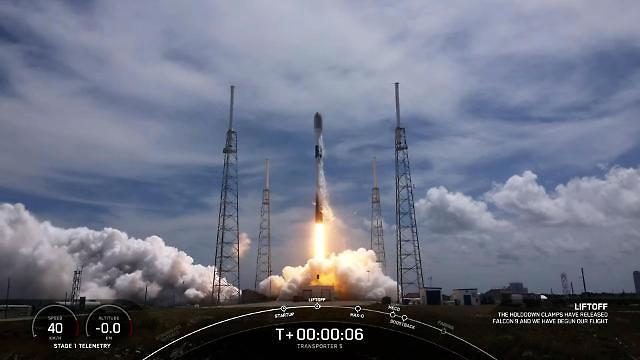
[Courtesy of Hancom]
A SpaceX rocket blasted off on May 25 at the Kennedy Space Center in Florida and placed the low-orbit satellite named Sejong 1, developed by Hancom Inspace, a subsidiary of South Korea's Hancom Group, into orbit. About eight hours later, the satellite communicated with its ground control station.
The satellite weighing about 10.8 kilograms (23 pounds)would collect image data during its test operation at an altitude of 500 kilometers (310 miles) by circling the Earth 12 to 14 times a day.
Hancom will launch its second satellite in the first half of 2022 and three more by 2024. Unlike Sejong 1, which was developed with Spire Global, a U.S. space-to-cloud data and analytics company, Hancom will produce the fourth satellite with independent technology. The company aims to launch more than 50 cluster satellites and provide video services that can be used to analyze crop conditions and predict grain production.
Through the acquisition of InSPACE, a satellite and UAV ground platform developer startup in 2020, Hancom has made an aggressive investment in the drone sector. By securing satellites, drones, and ultra-high resolution sensors, Hancom will establish a video data service belt covering space, aviation, and ground areas.
South Korea's science ministry aims to secure major space technologies using domestic parts as much as possible. The Seoul government has vowed to create a self-sustaining industrial ecosystem and cultivate innovative companies like Space X.
Space scientists in Seoul advocate a wise strategy to target niche markets at a time when reusable projectiles that can drastically reduce costs are emerging as a game-changer. In December 2021, the state-run Korea Astronomy and Space Science Institute (KASI) unveiled the real flight model of four homemade nanosatellites weighing less than 10 kg to observe changes in space weather through formation flight.
Copyright ⓒ Aju Press All rights reserved.




